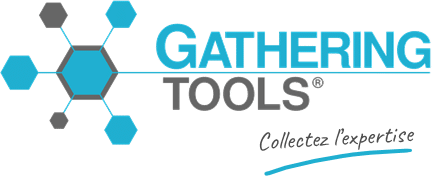Since 2012, the CSR (Corporate Social Responsibility) report has been mandatory for companies with more than 500 employees. It is designed to present, on an annual basis, the actions undertaken by organizations across social, societal, and environmental dimensions.
However, producing such a report requires both time and organization, and it can be challenging for those responsible (CSR managers, HR teams, administrative staff…) to manage the process efficiently and effectively.
In this article, we offer practical advice to help simplify the creation of your CSR report:
from identifying key indicators, to understanding the strengths and limitations of reporting tools — and essential tips for producing a relevant, impactful document.
Key CSR Metrics to Keep an Eye On

When it comes to CSR reporting, the first step is to focus on the key indicators to monitor.
Indeed, this process involves analyzing large volumes of diverse data, often stored across multiple information systems. To avoid wasting time, it’s crucial to know exactly what to look for. To help you get started, we have compiled a (non-exhaustive) list of relevant indicators below:
Social Indicators
-
Gender parity rate (male/female ratio)
-
Absenteeism rate within the company
-
Number of employees with disabilities, seniors, volunteers, apprentices, etc.
-
Distribution of contract types: permanent contracts (CDI), fixed-term contracts (CDD), apprenticeships, part-time, internships, volunteer work, etc.
Environmental Indicators
-
Consumption figures for water, electricity, gas, fuel, etc.
-
Greenhouse gas emissions (production, vehicle fleet, etc.)
-
All environmental initiatives implemented by the company, with a focus on achieved results
Governance Indicators
-
Composition of the Board of Directors
-
Number of employees trained in CSR
-
Voter participation rates in company decisions
Societal Indicators
-
Partnerships and sponsorships carried out by the company
-
Contributions to the development of the local and national economy
-
Measures to prevent corruption within the company
CSR Software: Pros and Cons

Producing a CSR report requires time, large volumes of data, and above all, good organization. To improve efficiency, you may have considered acquiring a dedicated tool without necessarily being aware of its strengths and weaknesses.
Therefore, we have decided to list the main advantages and limitations of such tools:
Advantages
-
Simplified data entry: You only need to fill in the designated fields once, minimizing the risk of input errors.
-
Automated processes: In today’s digital age, it’s possible to let machines handle repetitive and time-consuming tasks. Most CSR reporting tools now offer automation features, resulting in significant time savings and improved data reliability.
-
Enhanced reporting visuals: A report made up entirely of text can quickly become dull and hard to understand. Most CSR software today includes features that allow you to create tables and other user-friendly visual representations.
Limitations
-
Cost: Using such tools can quickly become expensive depending on the chosen plan. It’s important to carefully assess your needs before investing to avoid overpaying.
-
Learning curve: Dedicated CSR tools are not always very intuitive. A period of training and adaptation is often required to fully exploit their potential — unless you have someone trained internally to handle their use.
-
Data granularity: Despite technological advances, some CSR software still lacks optimal data granularity. This can make analyzing the collected information more difficult if it’s not precise enough, often resulting in less relevant and detailed outcomes.
Key Factors for Building a Reliable and Effective CSR Report

Let’s now focus on some practical tips to help you produce a reliable and engaging CSR report for your audience.
-
Aim for the finest possible data granularity. The more precise and deeply analyzed your information is, the better you will understand it and give it meaningful context. Conversely, using raw data is likely to leave you unable to interpret it properly.
-
Don’t go it alone. To ensure maximum reliability, it is important to involve all collaborators who have direct access to relevant data on the ground. Often, you will have only a partial view of the various challenges your report needs to address. Your colleagues can therefore be invaluable sources of insight thanks to their in-depth operational knowledge.
-
Use a dedicated data collection tool. While spreadsheets are still commonly used today for gathering and analyzing CSR data, they come with many limitations: tracking information exchanges, data consistency, version control, security, and more. For example, Gathering Tools offers collaborative data collection workflows that maintain the familiar look of your Excel files while addressing their initial shortcomings. This way, you save time, reduce the risk of data entry errors, and benefit from maximum security over all your data — without the complexities of traditional CSR software!
Producing a high-quality CSR report based on reliable data thus requires the use of appropriate collection tools and a rigorous, collaborative methodology to achieve precise indicators.
If you have a specific project or need, our experts are available to discuss and support you.










